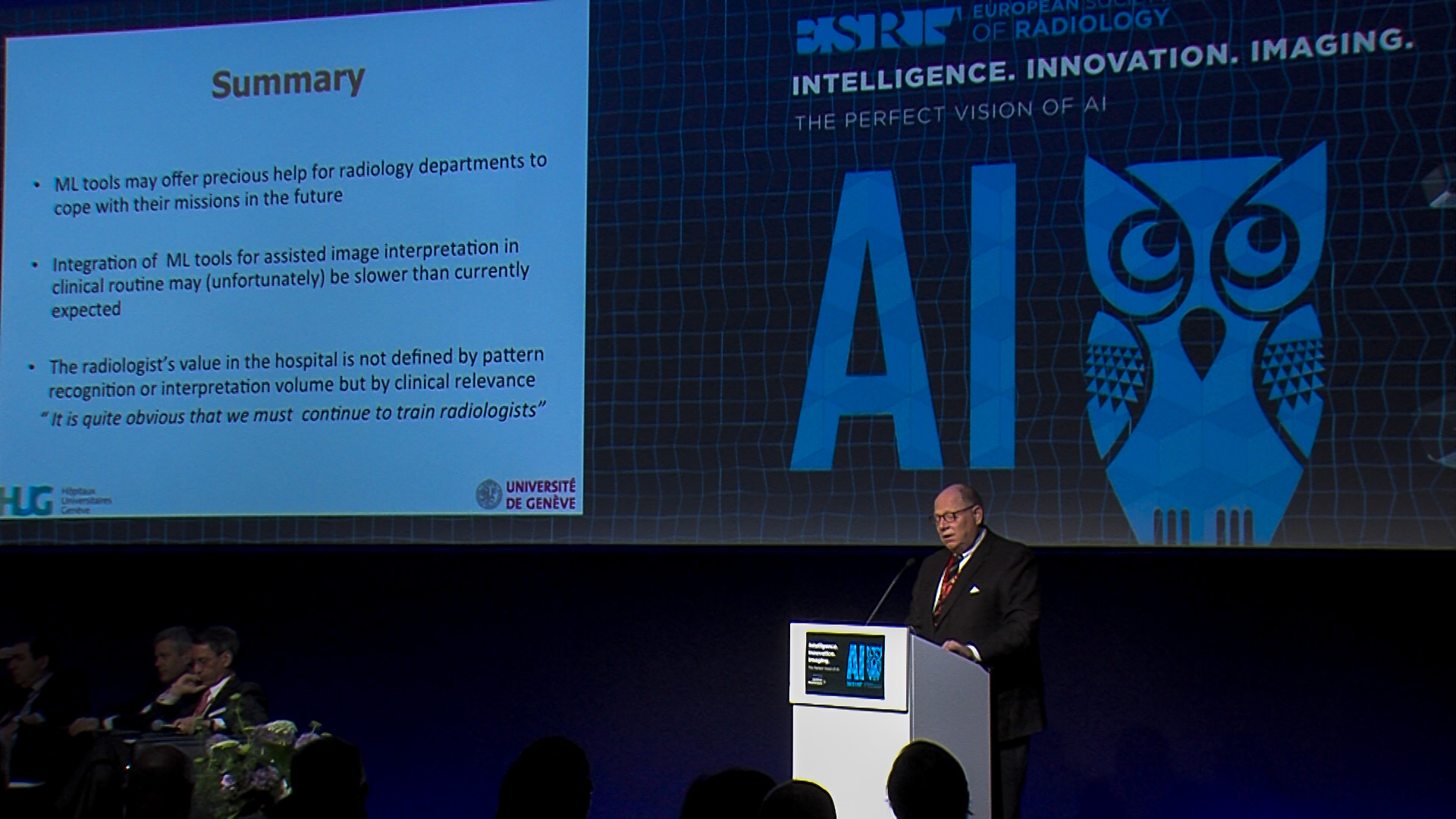As the demand for time-consuming imaging services keeps on growing, radiology departments are increasingly vulnerable to staff shortages. Artificial intelligence (AI) can be a solution in many management scenarios, but leaders must address the enduring apprehension and define which tools are relevant when making the most of the new technology. A world-famous leader shared timeless advice on how to tackle yet another disruptive change during the ESR AI Premium Event last April in Barcelona.
Clear benefits
Subspecialisation and the need for 24/7 services have pushed many radiology departments around the world to their limits. The machines, that so many radiologists fear will steal their jobs, could potentially help them lift this heavy burden, according to Christoph D. Becker, professor and chair of the Department of Radiology at the University Hospital of Geneva.
“Automation of our departmental workflow is probably the lowest hanging fruit to help us. But there is also automation of time-consuming and repetitive visual tasks, particularly those with high volumes and low complexity,” he said.
For example, automation of data management may help to extract data from patient records so that this task must no longer be performed manually. In the future, automation may also help to access the current scientific literature data mining related to the cases that are being read.
Address anxiety
All these benefits are here for the taking, yet fear may block technology adoption. AI has been a source of anxiety for many radiologists ever since Geoffrey Hinton – and others after him – said that radiology residency training programmes should simply stop now that computing power enables us to make gigantic leaps in machine learning.
Not only do existing radiologists fear for their position, but also future radiologists. Potential future displacement already discourages medical students to choose radiology as a career, a survey recently showed. “This is important; we have to look into that, address those fears,” Becker said. It is important to tackle the issue from various angles to ensure succession and survival. From a financial point of view, there is no doubt that replacing radiologists with machines would make things a lot easier. “No more issues like work-life balance, overtime, night shift compensation, risk of burnout, etc. Organisation would be tremendously simplified,” he said. But however seducing the sirens’ call may be, managers should not be lured into thinking that this displacement would not impact the quality of radiology care.
Unforeseen consequences
Stopping radiology residency programmes would put a further strain on already tight resources. Becker’s department, for example, supplies the radiologists for Western Switzerland, with 11 subspecialized units. Many of these radiologists will retire soon; when they do, who will provide imaging services to half of the country?
Many other disturbing questions arise when considering a scenario without trainees. “Where and when can I buy machines and robots that have board certification and ESR level 3 subspecialty skills? Who would override the wrong decisions in the meantime?” he asked.
Machines and robots may not be that easily acceptable as imaging consultants for difficult and complex cases, both for clinicians and patients. In the case of medical error, it is also unclear who, between the robots and their suppliers, would have to take over the medico-legal responsibility.
In the face of change, not all things change. Managing complex adjustment requires five immutable elements: vision, skills, incentives, resources, and having an action plan. “If vision is lacking, confusion will result. If skills are lacking in your department, there will be anxiety. Lack of incentives will cause resistance in your staff. Resources may be missing and cause frustration. And if you don’t have an action plan or it is not clear, downfalls are guaranteed,” Becker said.
A fool with a tool is still a fool
To integrate AI smoothly, department managers must ask themselves two questions: What do they want to automate, and more essentially, does automation make sense for their institution? “Remember: a fool with a tool is still a fool,” he said. One must also be able to know when a tool is mature enough for clinical routine and design a roadmap for its implementation.
Radiologists have lived with disruptive change for many decades and have survived many revolutions. They have adapted to constantly changing job descriptions that technological advances have brought. They must now trust their capacities to lead change and update their skills accordingly. “We’re used to revolutions in imaging,” he concluded.

Christoph D. Becker is a professor of radiology. He is the director of the Academic Department of Radiology and Medical Informatics of the Faculty of Medicine of the University of Geneva, Switzerland and chairs the Department of Radiology at the University Hospital of Geneva.
The lecture is available free of charge at www.mAIesr.org/recorded-lectures













